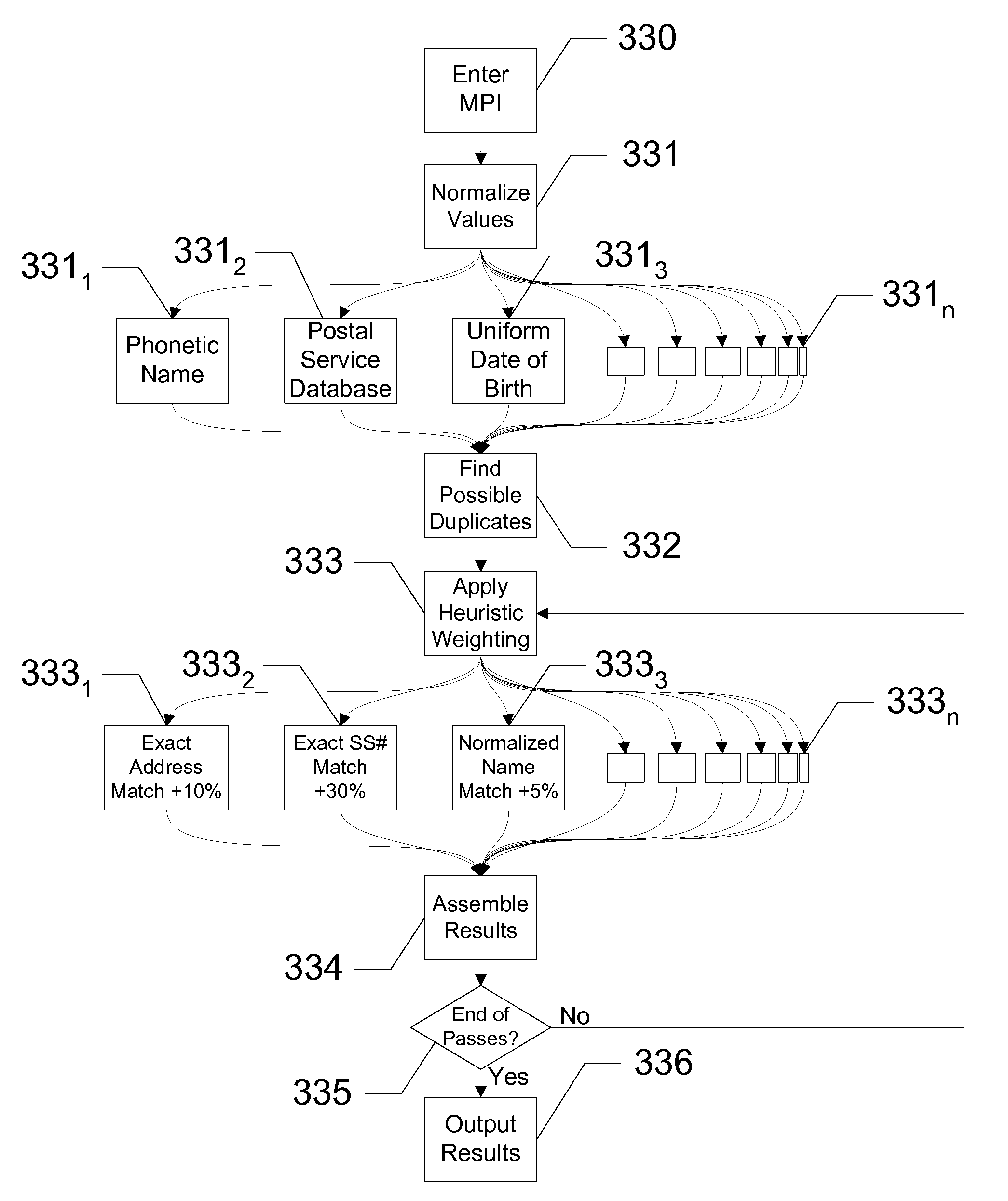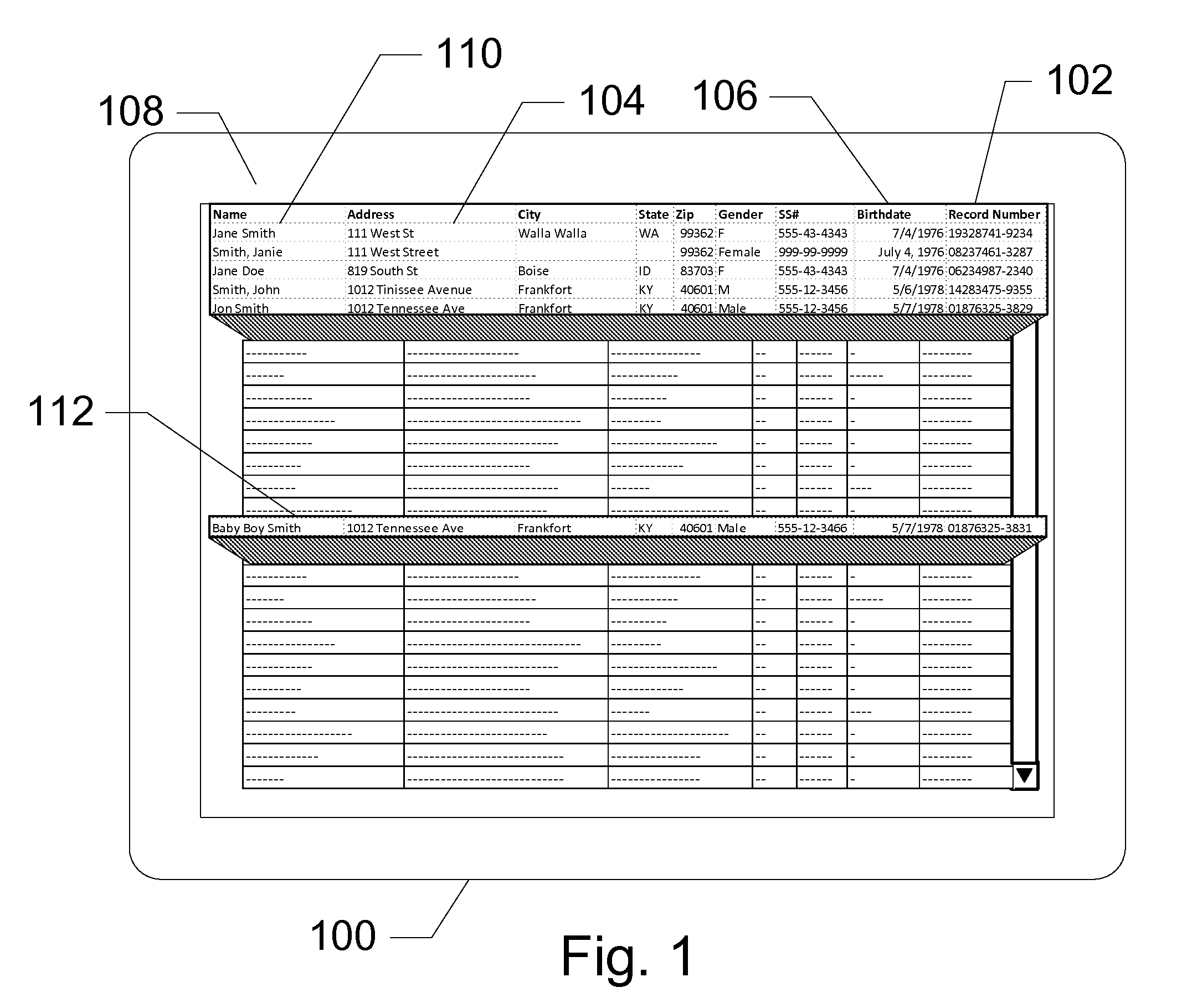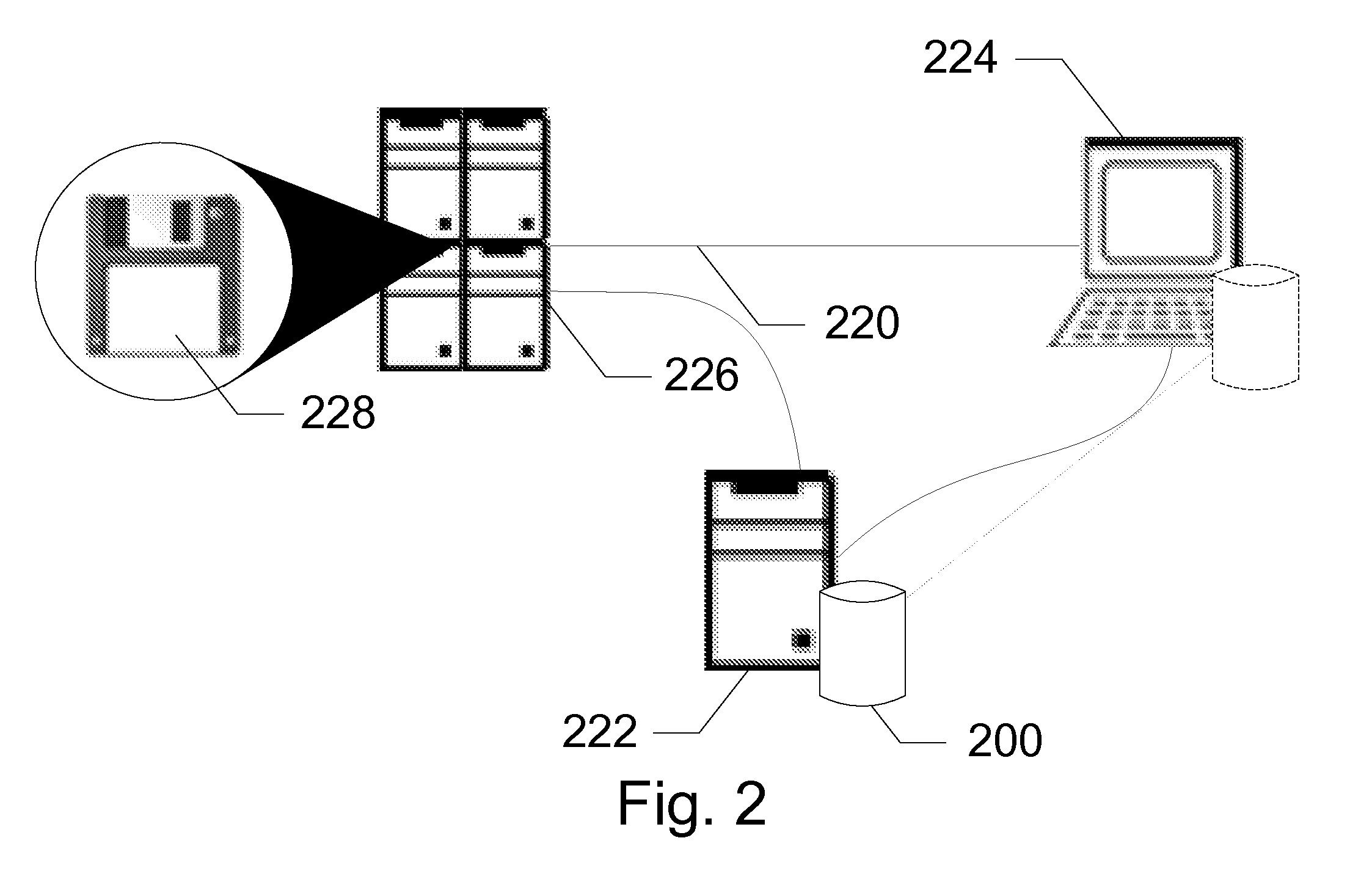Systems and Methods for Handling Multiple Records
a technology for managing multiple records and records, applied in the field of database management, can solve problems such as potential hospital liability, negative implications for care quality, and difficulty for caregivers to have a comprehensive record of patient treatment, and achieve the effect of reducing the rate of false positives
- Summary
- Abstract
- Description
- Claims
- Application Information
AI Technical Summary
Benefits of technology
Problems solved by technology
Method used
Image
Examples
Embodiment Construction
[0020]The present invention teaches a method of identifying ‘duplicate’ records in a database by finding similarities between records and applying a set of heuristic rules to determine a likelihood of being a duplicate record. The weighted results of the application of the heuristic rules identify possible duplicate records in the database. Embodiments of the present invention search records comprising fields of personal information. Matches are found between records and weighted according to the degree of similarity and uniqueness. By taking account of the different modes by which duplication errors typically originate in the database to which the method is applied, these heuristic rules identify a higher percentage of actual duplicate records in the database. The heuristic rules also produce a lower rate of ‘false positives’ than the methods for identifying duplicate records in databases now known in the art.
[0021]As used in this disclosure, a ‘duplicate’ record in a database mean...
PUM
 Login to View More
Login to View More Abstract
Description
Claims
Application Information
 Login to View More
Login to View More - R&D
- Intellectual Property
- Life Sciences
- Materials
- Tech Scout
- Unparalleled Data Quality
- Higher Quality Content
- 60% Fewer Hallucinations
Browse by: Latest US Patents, China's latest patents, Technical Efficacy Thesaurus, Application Domain, Technology Topic, Popular Technical Reports.
© 2025 PatSnap. All rights reserved.Legal|Privacy policy|Modern Slavery Act Transparency Statement|Sitemap|About US| Contact US: help@patsnap.com



